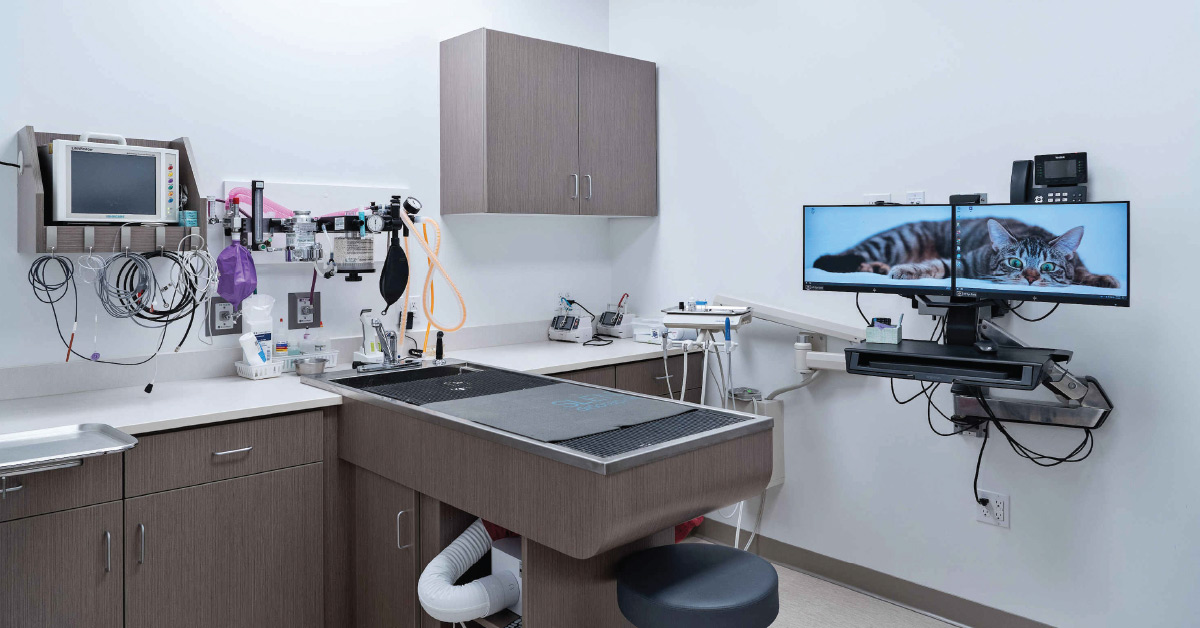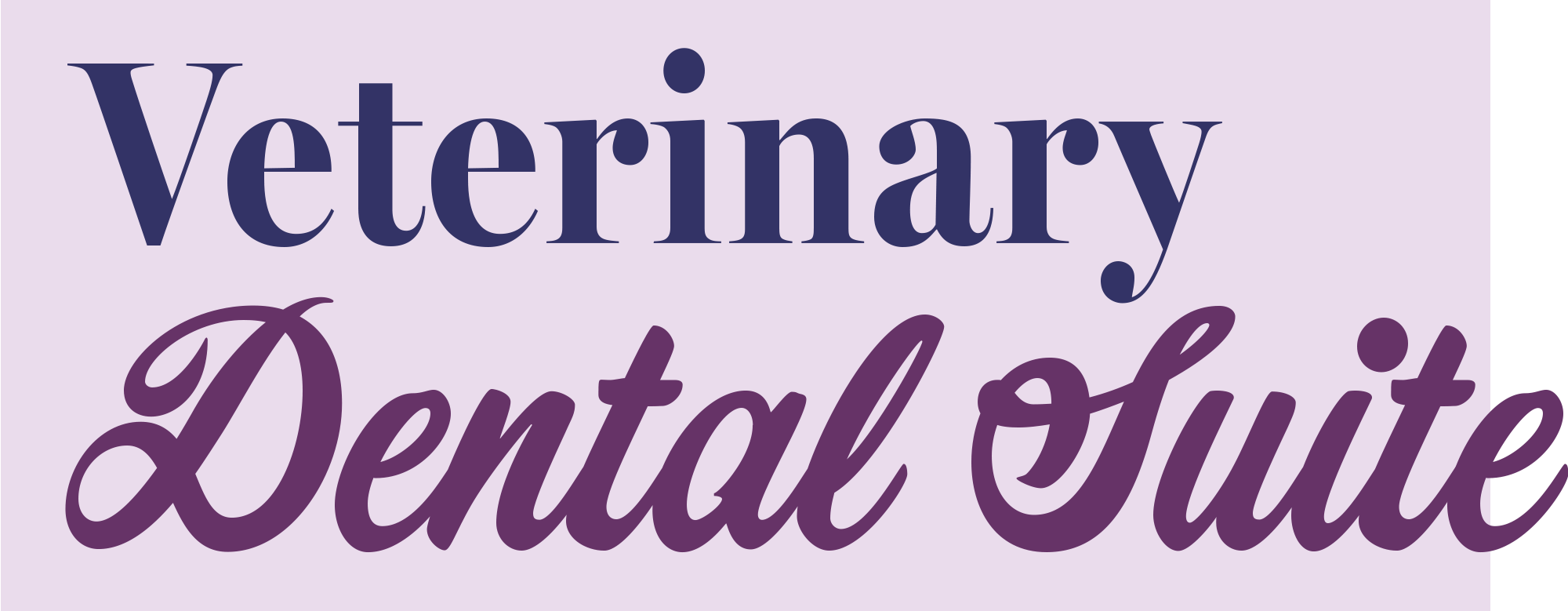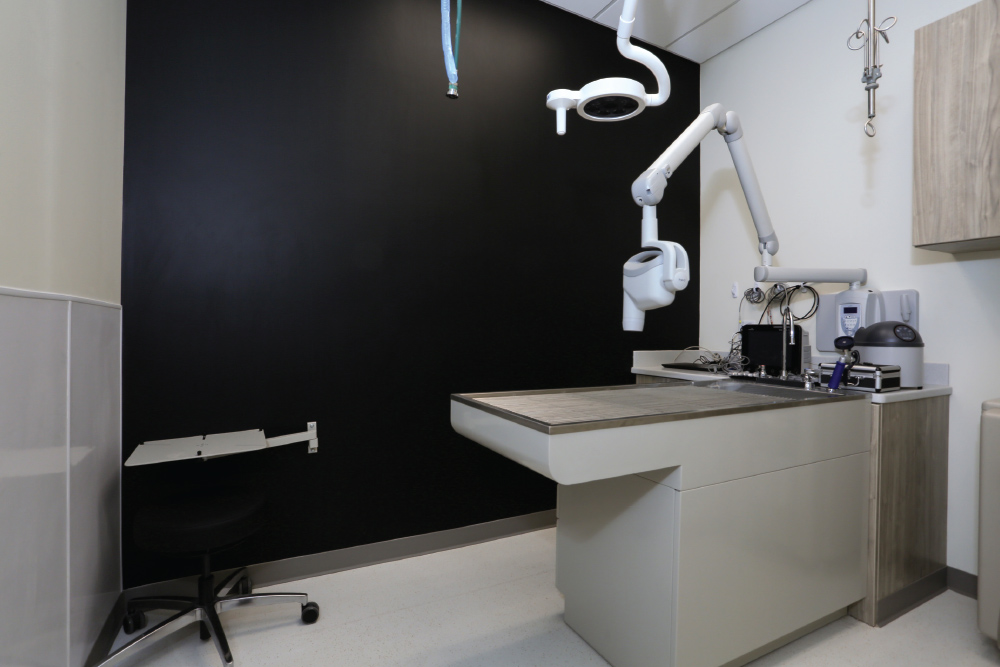




Photos provided by MD Architects
s an animal care professional, there’s a responsibility to ensure that your practice delivers the highest quality care in an environment that is functional, comfortable, clean and aesthetically welcoming. Creating this environment from scratch or within an existing space isn’t always easy, but becoming familiar with the design process can help prepare you to create a state-of-the-art space.
Many of these answers may be dictated by the available space or funds for this project. Nonetheless, walking through a basic programming and needs assessment is a vital first step.


Consider the auxiliary aspects of lights, power, plumbing and medical gas. The locations of these are often dictated by the larger pieces of equipment. Medical gas needs to be in a location where it is easily accessible, yet not in the way of your team while working. Power needs to be where it best serves the equipment. Overhead lighting and medical exam lights should be oriented to avoid creating any shadows or dark spots while a patient is on the table. It can’t be overstated enough that every inch of space counts!
A dental suite may be a small section of your veterinary practice, but designing for one requires keen attention to detail and an abundance of thought. Renovating or expanding your space to accommodate a dental suite won’t just affect that wing or section of the building, but the animal hospital as a whole. You’re constructing an operational veterinary hospital to deliver the highest quality care possible and a space to foster a positive professional environment for your team. By understanding the process that comes with creating an innovative dental suite, you’ll set your hospital up for successful years to come.


